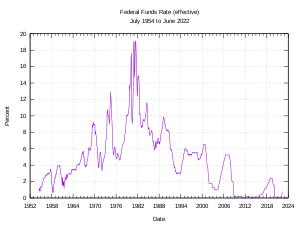 Image via Wikipedia
Image via Wikipedia
1) raise the retirement age for today's teens and toddlers up to 69. Longevity is increasing at such a rate that it will still be a great deal for them. 2) raise the income ceiling, the amount of income to which social security taxes are applied. I don't favor removing the ceiling altogether because it violates my sense of fairness. This fundraising is not for the national defense but to cushion the later years. There should be a limit as to how much someone is asked to subsidize other people's retirements. 3) Trim the increase that Social Security recipients receive each year. Currently they get the COLA adjustment, but they got an extra dollop last year because the inflation rate was too low. An index that trails inflation by a fraction would minimize the impact but could save substantial sums over time. Of course, if the Medicare costs for Part B and D go way up as they are supposed to that would be an unfair double whammy on the elderly. This would need to be part of the calculus on any COLA fix.
The ideas above all make sense, but they make even better sense when combined for the simple reason that it becomes shared sacrifice: the younger generations see a delayed retirement age, the middle generations see a slightly higher tax on wages and the older generation sees some limits on the rate of increase in payments. If everyone takes a piece of this responsibility it becomes less of a burden on everyone.
Read more: http://curiouscapitalist.blogs.time.com/2010/03/26/social-security-we-can-solve-this/?utm_source=feedburner&utm_medium=feed&utm_campaign=Feed%3A+timeblogs%2Fcurious_capitalist+%28TIME%3A+The+Curious+Capitalist%29&utm_content=Google+Reader#ixzz0jQcQrMXt




![Reblog this post [with Zemanta]](http://img.zemanta.com/reblog_e.png?x-id=6497332c-8885-4ea5-afe0-cf13ad2fe87f)

![Reblog this post [with Zemanta]](http://img.zemanta.com/reblog_e.png?x-id=4027a2c1-a8f9-4c8b-8191-90d3752f8a3e)


